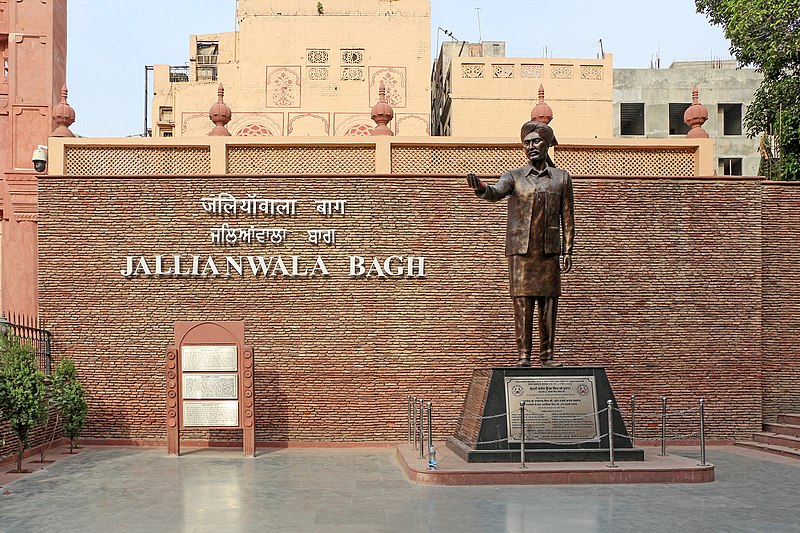


Jallianwallah Bagh: Not forgiven, nor forgotten…
One hundred years have passed us by since that fateful day of Baisakhi in Amritsar of British India. Over 1500 people were brutally murdered, thousands were caught in the quicksand of a stampede as they tried to escape a non-stop shower of bullets, and several could do no more than jump into a well in a desperate bid to get away. Inside a small park-like space, surrounded by private houses and narrow exits kept mostly locked, called Jallianwala Bagh, whose perimeter measured 6 to 7 acres, a crowd of people, many among who were visiting a cattle fair or taking part in harvest festivities and many who were curious bystanders going about the minutiae of their everyday lives, had gathered, to peacefully protest against the freshly-decreed Rowlatt Acts which curbed citizens’ civil liberties allowing imprisonment without trial, and the arrest of two local leaders.
Earlier that week, on April 10, Amritsar had been host to violence set off by public sentiment mounting from the arrests of several Indian leaders protesting some severely repressive post-war measures executed by the British government. Brig. Gen. Reginald Edward Harry Dyer had thus been given the task of restoring order in the city by the then Lt Governor of Punjab, Michael O’Dwyer.
On Sunday, 13 April, 1919, a day of Sikh festivities, Dyer apparently got wind of a major planned insurrection and banned all public meetings. The news of this ban, however, was not disseminated to the public. When Dyer heard that groups of people had convened at Jallianwala Bagh, he went in with his troops, blocked the main entrance, made his troops take position on a raised bank, and ordered them to open fire. He commanded that they target their bullets towards those gates through which the helpless mob, caught completely unawares, was trying to flee. The General’s troops fired with ruthless and robotic precision until their ammunition was exhausted.
Till this day, one hundred years later, after an affirmation of the “shamefulness” of the act by subsequent British Prime Ministers, our hearts still bleed when we think of those trapped hundreds, many of them children and teenagers, clutching at the banisters of closed gates and trying to get away, and falling miserably to shots fired by Dyer’s troops or jumping into a well in their wretchedness to escape. The walls of the park still bear the bullet marks; the well is still stained by the indelible ink of human blood; India’s pain at Jallianwala Bagh is still far from assuaged.
On 14 October, 1919, after orders issued by the Secretary of State for India, Edwin Montagu, a committee of inquiry, referred to as the Hunter Commission, named after the chairman, Lord Hunter, former Solicitor-General for Scotland and Senator of the College of Justice in Scotland, was formed to investigate the events which led to Jallianwala Bagh. On 19 November, Dyer was called to appear before the Commission. He stated that though he had come to know about the meeting at Jallianwala Bagh, he had not attempted to stop it. He calmly went on to clarify that he had gone with the deliberate intention of opening fire if indeed he found there was a crowd which had assembled. “I think it quite possible that I could have dispersed the crowd without firing but they would have come back again and laughed, and I would have made, what I consider, a fool of myself.” And the “Butcher of Amritsar” went back to Britain to a life of tranquil retirement while Jallianwala Bagh stood - stark, silent, irredeemable – as evidence of his unfathomable atrocity.
In the crowds that day was 22-year-old Nanak Singh, who had joined the protestors at Jallianwala Bagh. After the massacre, Singh wrote the epic Punjabi poem Khooni Vaisakhi, a scathing critique of the British Raj, which was banned soon after its publication in May 1920. This year, Singh’s grandson, diplomat Navdeep Suri, translated the poem into English and Sir Sydney Rowlatt’s descendant, British journalist Justin Rowlatt, contributed an essay to the book. In conversation with author, historian and screenwriter Alex von Tunzelmann at JLF at the British Library this June, they situate the massacre within the deep context of British colonial mentality and the dynamics of Indian nationalism, and explore the role the Amritsar massacre had played as a turning point in India’s struggle for freedom.
The massacre at Amritsar was actually a devastating warning-bell for Indians who still had blind faith in the British Raj - it shattered beliefs and showed up the mirror to the inexorable cruelty of British imperialism. Two days after the deadly killings, hundreds gathered to protest at Gujranwala and they were once again retaliated against by the police and by British aircrafts; twelve more people died protesting.
But the Indian nationalist movement had begun to gather momentum, a nation had been galvanised into action, and a wave of intense rage against dominion was brewing and waiting to find its way to seize a moment of decision. In 1916, thousands joined the Mahatma as he led the Champaran Satyagraha movement. The stage had been set for the battle-cry of “Quit India” as history played out a few decades later.
Rabindranath Tagore decided to renounce his British knighthood as “a symbolic act of protest” and wrote to the Viceroy, Lord Chelmsford, in May 1919, “I ... wish to stand, shorn, of all special distinctions, by the side of those of my countrymen who, for their so called insignificance, are liable to suffer degradation not fit for human beings…”
And yet for me, the bloodbath at Amritsar hasn’t yet seen the remorse or elicited the reaction it should have. One hundred years later, we are still talking, thinking and analysing. Will we ever stop mourning Jallianwala Bagh?

Leave a comment